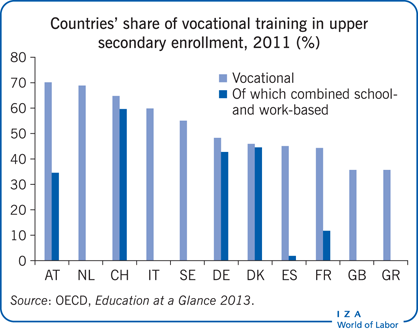Vocational Training Center dedicated to Design and - Nantes


Vocational Training - Therap Global
The 45-Second Trick For Career Tech NJ: Home
Occupation training is training for a particular career or trade, leaving out the occupations. Vocational training concentrates on useful applications of skills discovered, and is usually unconcerned with theory or conventional scholastic skills. A big part of the education in vocational schools is hands-on training. Trade training thus supplies a link in between education and the working world.
Why is Vocational Training Worth Thinking About? Occupation training provides training for specific tasks. Since trade training frequently begins in high school, students can graduate ready to take a high-paying, proficient job immediately. Graduates of trade or vocational schools have an advantage over informally trained job-seekers since an independent organization accredits that they have the abilities required to successfully perform a particular, competent profession.
The broadened concept of career and technical education attends to a scheduled program obviously and finding out experiences that permit trainees to explore profession alternatives, develop scholastic skills, attain high academic standards, and get ready for industry-defined work or innovative education. For example, the Tech Center at Yorktown, New York, uses twenty-nine vocational specialties, not only to prepare trainees for the building and manufacturing industries (traditional specialties of vocational education), however also for tasks in organization, human services, health services, and natural and agricultural science.


Things To Consider Before Starting A Vocational Training School
The 1# Vocational Training and Trade School Website PDFs
Public schools in some states have separate trade schools where students attend part time, either as part of the school day or at night, for specific programs in addition to academic courses. These programs usually consist of a sequence of courses as well as work-based learning experiences. Big communities and cities frequently have different public schools that students participate in full-time that provide both academic instruction and employment training to high school trainees.
< Read More Here ="p__4">The conventional focus of these schools is changing; no longer do trainees merely train for an occupation, but they are also needed to work toward a high school diploma or a GED. In addition, trainees are motivated to think about going on to some kind of postsecondary education. The 2004 National Assessment of Vocational Education, released by the U.S.
The report found that employment training at the high school level had positive results on brief- and medium-range earnings. It also discovered that high school students who took part in vocational programs also increased their academic course taking and achievement, too. Despite these favorable findings, nevertheless, career and technical education in secondary schools is on the decrease in the twenty-first century.
